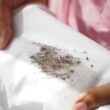Table of Contents Show
KEY FACTS
- A significant ingredient that differentiates Liege waffles from Belgian waffles is the addition of pearl sugar in Liege waffles.
- Liege waffles are made from dough, while Belgian waffles are made from batter.
- If you’re a fan of sweet and sticky, then Liege waffles are the way to go. However, Belgian waffles are a clear choice for a lighter, fluffier texture.
Waffles are one of the most popularly eaten meals in many households. While it is particularly eaten for breakfast in many homes, it can also be eaten for lunch or dinner. You can switch it up at any time of the day! Although many people are generally familiar with waffles, many are unaware of the differences in the types of waffles.
Yes, there are different types of waffles! Two popular waffle types many people are unsure of their differences are; Liege waffles and Belgium waffles. Are they the same, or are they different? In this article, we’ll explore these two waffle types and how you can tell one from the other.
Liege waffles and Belgian waffles are incredibly delicious waffle dishes originating in Belgium. While they may look very similar, the two types of waffles have several significant differences.
NEW: Making Caramel On Induction: Step-by-Step Guide
Belgian Waffles

Belgian waffles date back to the 1962 Seattle World’s Fair, where they first appeared. The waffles were once known as Brussels waffles, after the city where they got their start. The family who brought it to Brussels later changed its name to Belgian Waffles.
Belgian waffles can be distinguished more easily by their appearance than their components. Other waffle varieties do not have the deep pockets that Belgian waffles possess.
Liege Waffles
The Liege waffles are one of the most well-liked varieties of waffles in Belgium. The Liege waffle is a variety of waffles that was developed in the Belgian city of Liege, also known as gaufre de Liege in French. The origins of the Liege waffle recipe date back to the 18th century, when street sellers were a regular sight.
The waffle gained popularity fast due to its distinctive flavor and texture, and it has since established itself as a standard in different places in the world.
Pearl sugar is one of the major ingredients of Liege waffles. Pearl sugar is a type of sugar that has been compressed into a small, round pellet. The sugar in the dough melts and caramelizes while cooking, giving the finished product a crunchy surface and a soft, chewy core. As a result, Liege waffles have a distinctive texture that makes them stand out from other waffle varieties.
Liege is typically eaten plain, but you can eat it with toppings like whipped cream, fruit, powdered sugar, etc. The uneven shape of a Liege makes it distinctive.

Liege Waffle vs. Belgian Waffle
Although Belgian and Liege waffles look similar, they are not the same. The following are ways in which they differ from one another;
1. Ingredients
The ingredients for Liege waffles are slightly different from those of Belgian waffles. In addition to the typical waffle ingredients like flour, eggs, and butter, Liege waffles also contain pearl sugar. The pearl sugar is what gives Liege waffles their unique texture and flavor.
Another key ingredient in Liege waffles is yeast. The yeast helps the dough rise and adds to the waffle’s overall texture. Some recipes also call for vanilla extract, adding a subtle sweetness to the waffle.
The batter used to make Belgian waffles normally include flour, eggs, milk, butter, and yeast. The yeast is responsible for the waffle’s airy and light texture. Some recipes additionally include sugar and vanilla extract, which give the waffle sweetness and taste.
The inclusion of pearl sugar is one of the main distinctions between the ingredients of Belgian and Liege waffles. Liege waffles have a distinctive texture and flavor because Belgian waffles normally don’t contain pearl sugar.
2. Preparation
Compared to Belgian waffles, Liege waffles require slightly different preparation and cooking techniques. The dough is normally made ahead of time and allowed to rise for a few hours to make Liege waffles. Pearl sugar is added to the dough and fully incorporated after it has risen. The dough is then divided into little balls and given another 15 to 20 minutes to rest.
After resting, the balls are baked in a waffle iron so that the outside is crispy and the interior is soft and chewy. On the other hand, the batter for Belgian waffles is usually combined just before cooking. The batter is cooked in a waffle iron until it is crispy on the outside and fluffy on the inside.
3. Texture and Flavor
The texture and flavor of Liege and Belgian waffles are quite different due to their unique ingredients and preparation methods. Liege waffles have a caramelized exterior and a soft, chewy interior, thanks to adding pearl sugar to the dough.
The waffle’s texture is also slightly denser than that of a Belgian waffle. Belgian waffles, on the other hand, have a crispy exterior and a fluffy, airy interior. The waffle’s texture is light and airy, thanks to adding yeast to the batter.
In terms of flavor, Liege waffles have a subtle sweetness that comes from the caramelization of pearl sugar. Belgian waffles, however, are typically sweeter and have a slight vanilla flavor.
4. Serving and Toppings
Both Liege and Belgian waffles are delicious in their own right, and they can be served in various ways. Liege waffles are typically served with powdered sugar or a drizzle of chocolate sauce. They can also be topped with fresh fruit, whipped cream, or ice cream.
Belgian waffles are often served with butter and maple syrup, but they can also be topped with fresh fruit, whipped cream, or chocolate sauce. They can even be served savory with toppings like fried chicken, bacon, and eggs.
How to Make Liege Waffles
How To Make Belgian Waffles
Follow this process below to make Belgian waffles.
Ingredients
- 60g unsalted butter
- ½ teaspoon of vanilla extract
- 240g Flour
- 1 tablespoon caster sugar
- ½ teaspoon of baking powder
- ¼ teaspoon of bicarbonate of soda
- 1 egg
- 240ml of buttermilk
- ½ teaspoon of salt.
Steps to Make Belgian Waffles
- Mix melted butter, vanilla extract, and buttermilk in a large bowl.
- Break the egg and separate the yolk from the egg white. Mix the yolk with the buttermilk mixture made in the first large bowl. And whisk the egg white in a different bowl until it foams.
- Mix all of the dry ingredients in a separate clean bowl. Turn the buttermilk mixture into the dry ingredient to form a smooth batter.
- Gently add the foamy egg white, cover the batter with a cling film, and place it in a warm place to rise to double its size. This may take up to 45 minutes.
- Grease the waffle iron with some oil and preheat the oven. When this is done, pour enough batter into the waffle iron, close the lid, and allow it to cook for about 3 minutes or until the waffle is golden brown on both sides.
- Repeat the cooking process for the remaining waffle batter. Allow it cool for a bit and serve it with the toppings of your choice.
Final Thoughts
It might be challenging to decide which of these lovely waffles is the best. Both waffles are delicious in their own right and offer unique textures and flavors. If you’re a fan of sweet and sticky, then Liege waffles are the way to go.
However, Belgian waffles are a clear choice if you prefer a lighter, fluffier texture. Ultimately, the choice between Liege and Belgian waffles comes from personal preference.













